
What is the current state of the research on phonemic awareness treatment efficacy?
- Subject:
- Language, Grammar and Vocabulary
- Material Type:
- Homework/Assignment
- Author:
- Lauren Sprague
- Date Added:
- 07/03/2023

What is the current state of the research on phonemic awareness treatment efficacy?
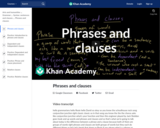
A phrase is any collection of words that behaves like a part of speech, like a noun phrase (“my brother Stu”), an adjectival phrase (“in a different shade of blue”), or an adverbial phrase (“with elegance and tact”). A clause is any noun phrase plus a verb; they can be sentences, but they don’t always have to be. You’ll see!
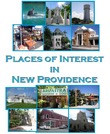
High Resolution images and simply worded information on popular places of interest in New Providence.
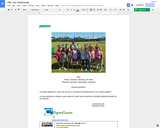
A 2nd grade STEM unit on biodiversity. Students will learn about habitats and their biotic and abiotic components and needs to create and implement a plan/device to increase the biodiversity of the urban school garden.

An online interactive resource for children to explore and learn from visual art through quizzes and games. You can test your memory with lace, create a colourful fruit poster, paint a Paul Henry skyline, or try your knowledge with a quiz.
This fun interactive encourages looking and responding to visual art and enables the child to look at and talk about works of visual art through strengthening their vocabulary.

This English Language Arts lesson focuses on the understanding of literary devices as related to poetry with poems found via poetryfoundation.org.Students will analyze tone and mood by rephrasing lines of poetry to match the author's intent.Students will explore the poet's message and defend their ideas in paragraph form.This assignment addresses Nebraska state standards: NE.LA 10.1.6.A NE.LA 10.1.6.C NE.LA 10.1.6.K NE.LA 10.2.2.E This lesson will take about 40-50 minutes.
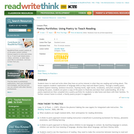
Teach your students about sentence structure, rhyming words, sight words, vocabulary, and print concepts using a weekly poem.
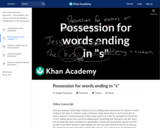
Do words that end in "s" still need _'s_ to show possession? David and Paige explain!
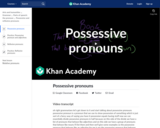
Possessive pronouns describe what things belong to which people, like "her shoe" or "the book is mine." Possessive pronouns can be adjectives, like "his bicycle," or they can stand in for nouns, like "the seats are theirs." Neither of these forms should have apostrophes to show possession -- so it's ours (not our's) and yours (not your's).

Long, fancy words designed to show off your intelligence and vocabulary are all very well, but they aren't always the best words. In this short playful video Terin Izil explains why simple, punchy language is often the clearest way to convey a message. A quiz, thought provoking question, and links for further study are provided to create a lesson around the 2-minute video. Educators may use the platform to easily "Flip" or create their own lesson for use with their students of any age or level.
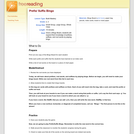
Given a Bingo Board, students will expand their knowledge of prefixes, suffixes, and root words by playing bingo.

This activity will help learners identify prepositions used in sentences.
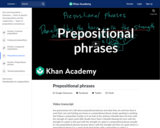
Prepositional phrases are word chunks that begin with a preposition.

Teaching Prepositions of Place – in, at, onThis lesson plan is part of an eight-part series and it discusses how to use prepositions with place. It starts with an explanation and moves into communicative activities that give students plenty of time to practice. You’ll also cover how to use prepositions when discussing vehicles (as noted in the example above). These lesson plans are guaranteed to clear up any questions students have regarding how to use these tricky words! With both, it’s important to note that using in,at and on with time and place are totally different,students should treat them as new prepositions with each lesson.If you want additional lesson plans and support, including teachers’ notes, be sure to register for a free Off2Class account.
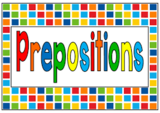
The attached student lesson is designed for Grade 4 English Language Arts students. Students will apply knowledge of word structure elements, known words, and word patterns to identify and utilize prepositions.This student lesson addresses the following NDE Standard: NE LA 5.1.5.a.It is expected that this student lesson will take students 90 minutes to complete.

This lesson is for third grade students to learn about prepositions.
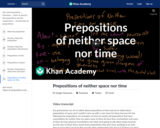
Some prepositions describe relationships between people or things. These prepositions don’t include information about time or space.

This activity will allow students to use correct prepositions with the public places

This activity will allow students to use correct prepositions with the public places
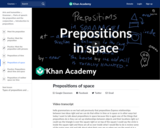
Some prepositions help describe relationships between objects and their locations in space. David explains how!